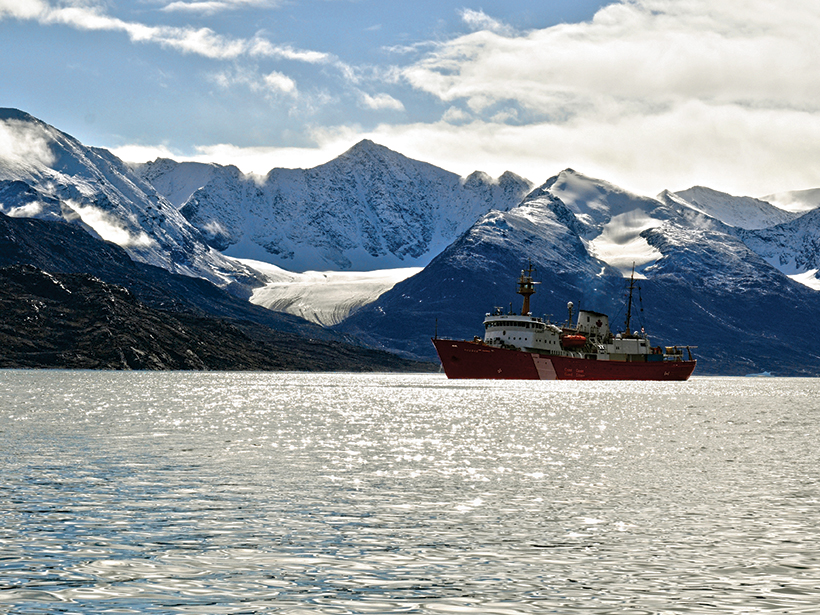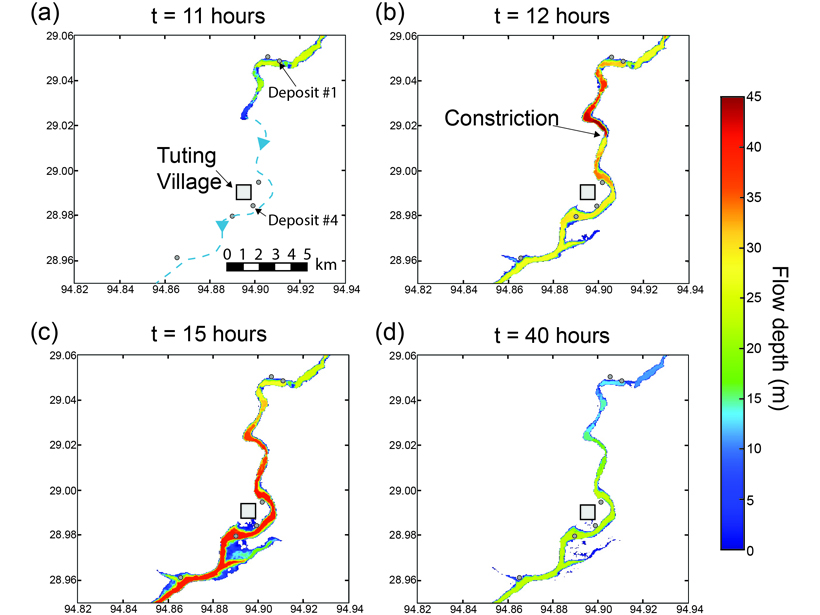An increase in activity of hundreds of slow-moving landslides during extreme wet conditions in California provides insights into the landscape response to ongoing climate change.
Journal of Geophysical Research: Earth Surface
Arctic Glacial Retreat Alters Downstream Fjord Currents
High-resolution mapping efforts could improve predictions of coastal changes as glaciers shrink around the world.
Missing Lakes Under Antarctic Ice Sheets
New radio sounding study finds little evidence of lakes under Antarctica’s Recovery Glacier.
Enabling Dynamic, Regional-Scale Modelling of Outburst Floods
The GeoClaw model is used to simulate a landslide-dam outburst flood through rugged Himalayan topography.
Study of Alaskan Landslide Could Improve Tsunami Modeling
A rare submarine landslide provides researchers with a reference point for modeling the biggest tsunamis.
Subglacial Water Can Accelerate East Antarctic Glacier Flow
Airborne radar from the Recovery Glacier system demonstrates the importance of characterizing the underlying causes of ice flow speedup to understand how glacial discharge could change in the future.
Formation of Sedimentary Deposits: Bypass Versus Mass Extraction
Grain size and sediment delivery pathways from the Ganges delta have been used to model downstream facies changes.
A Novel Way to Map Debris Thickness on Himalayan Glaciers
By combining changes in elevation with other data, scientists have developed a method for estimating the thickness of debris covering glaciers on whose water more than 800 million people depend.
Peering Beneath the Powder: Using Radar to Understand Avalanches
High-resolution radar images from Switzerland’s experimental test site show that snow temperature is a key factor in classifying avalanche behavior.
Untangling Sediment Transport Through River Networks
A stochastic sediment routing model for river networks is inverted to determine sediment source areas based on point observations of grain size and sediment flux at the basin outlet.










